New Delhi: Sanjay Gandhi, former prime minister Indira Gandhi’s son, wielded immense power during the Emergency, which was promulgated exactly 50 years ago.
He is remembered for imposing restrictions on the press, initiating forced sterilisation drives, and ordering large-scale demolitions for the “beautification” of the national capital.
As the Shah Commission later noted, “Here was a young man who literally amused himself with demolishing residential, commercial and industrial buildings, in localities after localities without having the slightest realisation of the miseries that he was heaping on the helpless population who had no recourse by way of any administrative avenue for redress of grievances or even to the courts which were successfully side-tracked by the devious means.” The commission was appointed by the Janata Party government in 1977 to look into the illegalities committed during the 21 months of the Emergency.
Despite criticism over his authoritarian approach, Sanjay was re-elected to the Lok Sabha from Amethi when the Congress returned to power in 1980. However, just months later, he died in a plane crash. At first, his wife, Maneka Gandhi, floated her own political outfit after a fallout with Indira Gandhi. But later, she joined the Bharatiya Janata Party (BJP) along with her son, Varun Gandhi.
After Indira Gandhi, it is perhaps Sanjay’s role in the Emergency that is the best documented. Five decades later, ThePrint takes a closer look at the other characters who played their part in shaping the Emergency, and the legacies that they have left behind. Some of them continued to wield political power even after the Emergency, others had their children enter the political fray, and there are even those who retreated into the political wilderness.
Also Read: ‘Mediocre loner’ to Emergency bad boy, Sanjay Gandhi is the big ‘what if’ in Indian politics
Siddhartha Shankar Ray

The West Bengal chief minister from 1972 to 1977, Siddhartha Shankar Ray, was considered among the chief architects of the Emergency.
In the book ‘The Emergency: A Personal History’ (2015), journalist Coomi Kapoor highlights a letter that Ray wrote to Indira Gandhi. It shows that Ray, along with then-law minister H.R. Gokhale, Congress president D.K. Barooah and Bombay Pradesh Congress Committee “bagman” Rajni Patel, devised the idea of not just promulgating an Emergency, but also imprisoning political rivals. The plan, Kapoor writes, was made as early as January 1975.
A lawyer himself, Ray ironed out the legal concerns that Indira Gandhi raised over the imposition of the Emergency, visiting Delhi almost every week, according to Kapoor. For instance, he studied the ‘Business Rules’, which dictate how the government’s business is allocated among various ministries and departments, to address Indira Gandhi’s concerns over whether she could recommend a decision to the president without consulting her Cabinet first.
However, after the Emergency, Kapoor notes that Ray lost influence over Indira Gandhi, owing to Sanjay’s dislike for Leftists.
According to an Indian Express article from 5 May 1977, after the Emergency, Ray jumped into a contest for the party presidency with the support of Congress leaders opposed to Indira Gandhi’s attempts to control the party affairs.
However, he lost to Brahmananda Reddy, who was backed by Indira Gandhi’s group. Ray managed to make a political comeback when he was appointed the governor of Punjab from 1986 to 1989. He was also appointed the ambassador to the US by the Narasimha Rao government in the 1990s.
Ray’s wife, Maya Ray, also a lawyer, won the Raiganj Lok Sabha seat in a by-election after Ray vacated it once he became the West Bengal CM.
Fakhruddin Ali Ahmed
Fakhruddin Ali Ahmed was the fifth president of India (1974-1977) and he was the one who signed the Emergency proclamation on 25 June 1975.
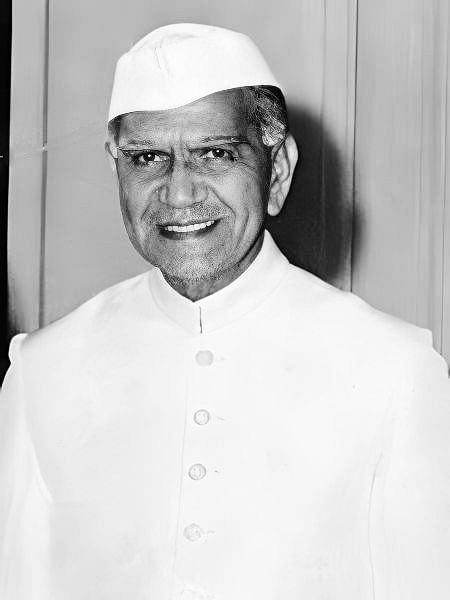
In his deposition before the Shah Commission, Ahmed’s secretary K. Balachandran said that India Gandhi told Ahmed in a letter that the proclamation was necessary if he was satisfied with the score of imminent danger to the security of India due to internal disturbances—which the two had discussed earlier in the day.
The PM also said that she could not consult the Cabinet due to the shortage of time and the urgency of the matter.
Balachandran claimed he advised the president that it would be constitutionally impermissible for him to act in the manner suggested in the letter, and that he had to act on the advice of his Council of Ministers. Convinced by Balachandran, Ahmed then phoned Indira Gandhi.
However, Balachandran recalled, when he left the president’s room for 10 minutes, Ahmed signed the proclamation and handed it over to R.K. Dhawan, Gandhi’s secretary.
Ahmed is remembered for complying with Indira Gandhi’s decisions during the Emergency, signing off on draconian constitutional changes and amendments to laws.
Ahmed’s son Parvez Ahmed had an unsuccessful run in politics, contesting in 2014 as a Trinamool Congress (TMC) candidate from the Barpeta Lok Sabha Constituency in Assam and losing to the All India United Democratic Front (AIUDF) candidate.
His other son, Badar Durrez Ahmed, retired as the Chief Justice of Jammu and Kashmir High Court in 2018. Before his elevation, Badar, in the early 1980s, started his practice at the chamber of Siddhartha Shanker Ray when he was practising as a senior advocate.
D.K. Barooah

During the Emergency, Dev Kant Barooah was the president of the Indian National Congress. He also served as a Bihar governor from 1971 to 1973. He not only helped plan the imposition of the Emergency but was also instrumental in drumming up support for Gandhi before and during that period.
“D.K. Barooah, the rotund sycophantic party president, described contemptuously by Sanjay as a ‘joker’, declared ‘Indira is India and India is Indira’, a refrain which sounded ominously similar to the Nazi slogan ‘Germany is Hitler and Hitler is Germany,’” Kapoor notes in the book, describing events that took place a week before the Emergency was promulgated.
However, Kapoor notes, Barooah, an Indira Gandhi admirer, turned against her when she was out of power, making sarcastic remarks about her. “When the Congress split, he remarked disloyally at one of his evening durbars, ‘From the country’s leader, she became a party leader and now she has become no more than a faction leader,’” the book says.
Bansi Lal

Often referred to as the architect of modern Haryana, Bansi Lal was a close confidante of both Indira and Sanjay Gandhi, and was considered a part of the elite “Emergency caucus”.
The three-time Haryana chief minister also served as the defence minister from December 1975 to March 1977. The Shah Commission had specifically looked into Lal’s role in the detentions of people in Haryana during the time.
He refused to appear before the Shah Commission and the latter said that “the power that Shri Bansi Lal exercised, and the manner in which he wielded it, would rank him with medieval despots”.
The commission’s report also asserted that, in a few cases, district authorities were reported to have executed demolition programmes in Haryana on Lal’s direct intervention, “in callous disregard of rights of citizens and prescribed legal procedures”.
“In one of his letters Shri Bansi Lal wanted Haryana to set an example in this field also,” the report noted.
Lal’s admiration for Indira Gandhi is also well documented, with reports and books quoting him as saying, “Get rid of all this election nonsense. If you ask me, just make our sister (Indira Gandhi) President for life and there’s no need to do anything else.”
In 1996, Lal parted ways with the Congress to set up his own Haryana Vikas Party, only returning to Congress before the 2004 Lok Sabha polls.
His family continues to be connected to politics. He had two sons— Ranbir Singh Mahendra and Surender, both of whom have been Haryana MLAs.
Surender Lal was a Haryana Vikas Party MP before switching to the Congress ahead of the 2005 Haryana Assembly polls. Surender died in a helicopter crash in 2005, after which his wife, Kiran Choudhry, took over the Tosham seat—Bansi Lal’s stronghold since 1967. Kiran won the Tosham seat on the Congress ticket for four consecutive terms before switching to the BJP last year, along with her daughter Shruti.
During elections last year, Congress named Mahendra’s son, Anirudh Chaudhary, for the Tosham seat, pitting him against his cousin, Shruti, the BJP candidate. Shruti won the seat by over 14,000 votes. Kiran is a Rajya Sabha MP.
V.C. Shukla
Vidya Charan Shukla, the information and broadcasting minister during the Emergency, was instrumental in curbing media and press freedoms at the time.

Kapoor notes in her book that, on his first day as the I&B minister, Shukla was on the prowl for any dissidents. He ordered detailed background records of all editors and correspondents to be prepared with Intelligence Bureau’s help. He was clear in his directives—no confrontation or dissent would be allowed between the government and the press.
Among other things, the Shah Commission report also held the I&B ministry responsible for the harassment of playback singer Kishore Kumar. It banned all his songs on All India Radio and Doordarshan (Television), and froze the sales of gramophone records of all his songs for “grossly discourteous” towards ministry officials. It only relented only after Kumar agreed to cooperate during the Emergency.
However, Shukla told the commission that this episode was “regrettable and that he accepted the entire responsibility in the matter”. The commission found him “responsible for gross misuse of power”.
After the Emergency, Shukla found his own path to power. He had short stints with the Congress government under Rajiv Gandhi, co-founded the Jan Morcha, became a minister in the V.P. Singh-led National Front government, was appointed minister of external affairs in the Chandrasekhar government and minister of parliamentary affairs and irrigation under PM PV Narasimha Rao, and headed the Chhattisgarh unit of the Nationalist Congress Party. He even joined the BJP in 2003, only to find his way back to the Congress in 2007.
In 2013, he was injured in a Naxal attack during the Congress Party’s Parivartan Yatra in Chhattisgarh, passing away days later.
Om Mehta
Originally beginning his political journey with the National Conference in Jammu and Kashmir, Mehta joined the Indian National Congress a decade before the Emergency in 1964.
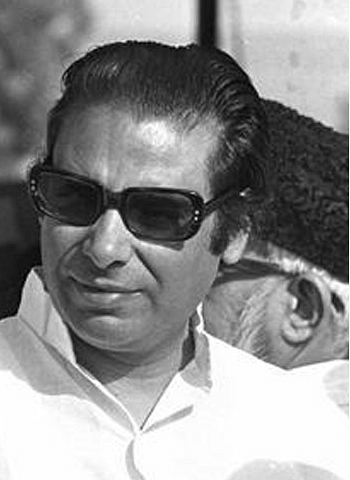
During the Emergency, he served as the minister of state for home, personnel and parliamentary affairs with independent charge. However, in her book, Kapoor recalls that the home ministry was called the “Om Ministry” because it was he who called the shots.
According to then-Delhi lieutenant governor Kishan Chand’s testimony before the Shah Commission, Mehta was a part of the meeting at the PM’s house before the Emergency, preparing the list of persons proposed to be detained once it was announced. Chand also told the Commission that the orders of detention of political rivals under the Maintenance of Internal Security (MISA) were being issued under the directions of people in position, including Mehta.
On 15 March 1976, in an article on the front page of the Indian Express, Mehta described the period after the declaration of Emergency as the “golden era” since Independence. He claimed that all the fields were more disciplined now, and production had increased.
However, post the Emergency, Mehta’s political trajectory declined significantly, with no record of him holding any significant party or ministerial position.
Jagmohan
Jagmohan was the vice-chairman of the Delhi Development Authority (DDA) during the Emergency, making him instrumental to Sanjay Gandhi’s plan to “beautify Delhi”.
The Shah Commission report notes that Sanjay Gandhi would meet then-municipal commissioner B.R. Tamta and Jagmohan every morning at 1, Safdarjung Road, giving them orders for the actions to be carried out by their respective departments.
The most infamous demolitions during this drive were carried out in April 1976 near the Muslim-dominated area of Turkman Gate. There, the police opened fire on the residents who were protesting the demolitions. And before the demolitions took place, when a delegation of residents, anxious about losing their livelihoods, asked the DDA if Turkman Gate residents would be resettled together in a single colony, Jagmohan reportedly said, “Do you think we are mad to destroy one Pakistan to create another Pakistan?”

“The Commission has reached the conclusion that the prime mover for most of these demolitions was Shri Sanjay Gandhi. Shri Jagmohan and Shri Tamta apparently were acting on the directions at the behest of Shri Sanjay Gandhi, who had his own ideas about slum clearance, beautification of the city and the resettlement of the displaced persons,” the Shah Commission report said later.
However, it emphasised that Sanjay Gandhi was holding no administrative position in Delhi at the time. “It is surprising that he should have wielded such enormous powers without being accountable to anyone,” it added.
It further said that, “in a number of cases, the normal and established legal processes were not complied with by Shri Jagmohan and Shri Tamta”.
Jagmohan went on to become the Delhi L-G from 1982 to 1984, the governor of Jammu and Kashmir from 1984 to 1989, and the L-G of Goa, before joining the Bharatiya Janata party in the 1990s.
His son, Justice Manmohan, is currently a Supreme Court judge.
R.K. Dhawan
Rajinder Kumar Dhawan was Indira Gandhi’s close confidante, having been her personal secretary from 1962 up until her assassination in 1984. During the Emergency, he remained a prominent name, functioning from within the inner circle of the Gandhis, being close to both Indira and Sanjay Gandhi.

Once a stenographer at former PM Jawaharlal Nehru’s office, the power he later wielded was such that journalist Coomi Kapoor recalls that his “word carried the authority of the prime minister”.
In fact, according to records, like letters, Dhawan was one of the few people kept in the loop about the decision to impose an Emergency, and it was he who delivered the draft of the proclamation for the Emergency to President Fakhruddin Ali Ahmed, Kapoor says in her book.
Former Delhi L-G Kishan Chand also claimed later that Dhawan, along with Mehta and former superintendent (CID) K.S. Bajwa, was one of the key decision-makers in the preparation of the list of people to be detained.
While there was chatter that Dhawan was being sidelined after Rajiv Gandhi took over the command of Congress, he was made a Rajya Sabha MP in 1990 and given a seat in the Congress Working Committee.
He married his long-term companion, Achala, at the age of 74 in 2012.
Kishan Chand
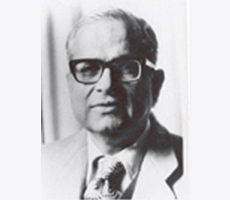
An Indian Civil Service officer, Kishan Chand served as the Delhi L-G from October 1974 to March 1977.
He played a role in widespread media censorship as well as the mass arrest of dissenters and political rivals. He testified before the Shah Commission that several orders that he issued came from Sanjay Gandhi, which were passed on through Chand’s private secretary, Navin Chawla.
The Shah Commission report said, “Shri Kishan Chand has by his various actions and inactions with regard to important and vital matters concerning detentions and allied matters shown himself as incapable of taking the right and timely decisions, or even as much as interested in the proper administration of Delhi of which he was the head.”
“He betrayed his trust and committed a serious breach of faith with the citizens of Delhi and failed to administer the affairs of the territory honestly and justly.”
He died under mysterious circumstances, with his body being found in July 1978 in a deserted well near Shahpur Jat village in Delhi. Though media reports from the time say that a note was found in his bedroom saying that he was depressed because of the probe into the Emergency, several politicians alleged a conspiracy behind his death.
Navin Chawla
A 1969-batch civil servant, Navin Chawla served as the private secretary to Delhi L-G Kishan Chand during the Emergency.
Some additional district magistrates and detaining authorities told the Shah Commission that they were called by Chawla to “issue as many orders as possible”—as many as 100 to 150 orders per month. However, Chawla denied having given instructions to the ADMs on the number of detentions.
“It is clear on the evidence that Shri PS Bhinder, KS Bajwa and Navin Chawla exercised enormous powers during the emergency because they had easy access to the then Prime Minister’s house. Having acquired that power, they used it without cons
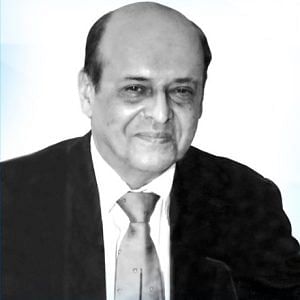
idering whether the exercise was moral or immoral, legal or illegal,” the Shah Commission report said. P.S. Bhinder was the deputy inspector general of police (range) at the time.
“The Commission is of the opinion that though the involvement of these officers may vary slightly in degree, their approach to the problems of the period relating to the citizens was authoritarian and callous. Their only anxiety was to preserve and protect their proximity to the seat of power, and towards that end they did everything which they thought would lead to their advancement,” it added.
The report was a huge indictment of Chawla, with the commission highlighting gross misuse of position and abuse of powers “in cynical disregard of the welfare of the citizens”.
Chawla was appointed to the Election Commission of India in 2005, a year after the Congress-led United Progressive Alliance took over. He went on to serve as the chief election commissioner from April 2009 to July 2010.
(Edited by Sanya Mathur)
Also Read: Siddhartha Shankar Ray was crisis manager from Bengal to Punjab, not just Emergency advisor



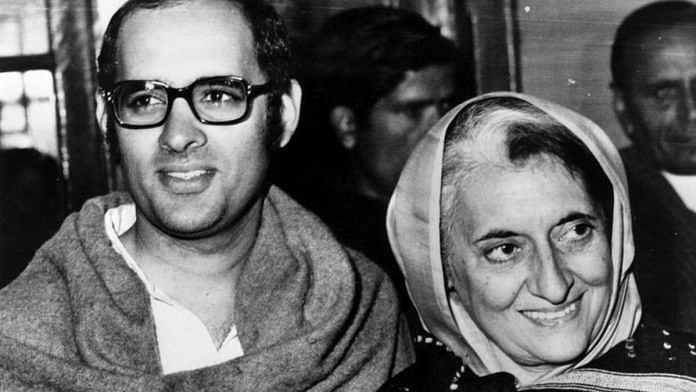



The reimposition of emergency is not on, however tempting it is for our present Netas, for the unbridled power it bestows.